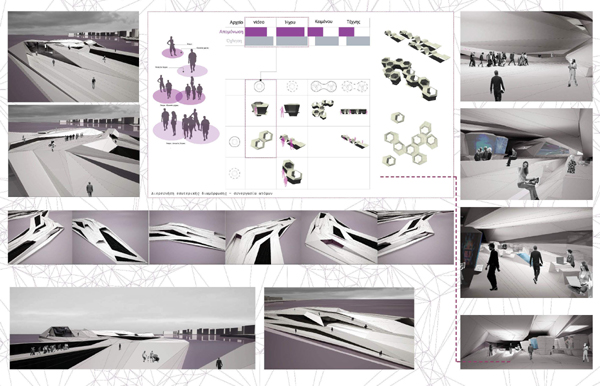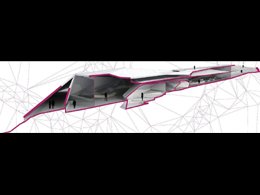STUDENTS PROJECTS
PROJECTS 2011
Students: Georgiadou Eleni, Gkoumas Andreas
Academic Supervisors: A. Paka, A. Tzaka
Aristotle University of Thessaloniki _School of Architecture
Project examination date: 10/02/2011
The work field of this diploma design project, deals with the study and design of the "eastern gap", focusing on the seaside track where this area concludes. One of the characteristic aspects, of both the study and the surrounding area that is located in the heart of the city of Thessaloniki, is the high percentage of cultural and educational uses. In that sense the whole area can be identified as the cultural and educational core of the city.
During the first phase we mainly focused on the study case of the wider urban area, trying to create a network system; we studied extensively the diffusion of the flows and the access points, taking into account that the whole area will be designed as a metropolitan park. This process leads to the diagrammatic stimulation of an artificial network, by using the Delaunay algorithm. This algorithm developed a tessellated model that leads us to the next diagrammatic approach and to the main design concept, that of a transitional area from the west to the east section of the city, concluding to the vertical approach of the study area in order to stress this transition. In a further study of the concept we designed a space syntax - an architectural vocabulary that uses folded surfaces to create different special conditions.
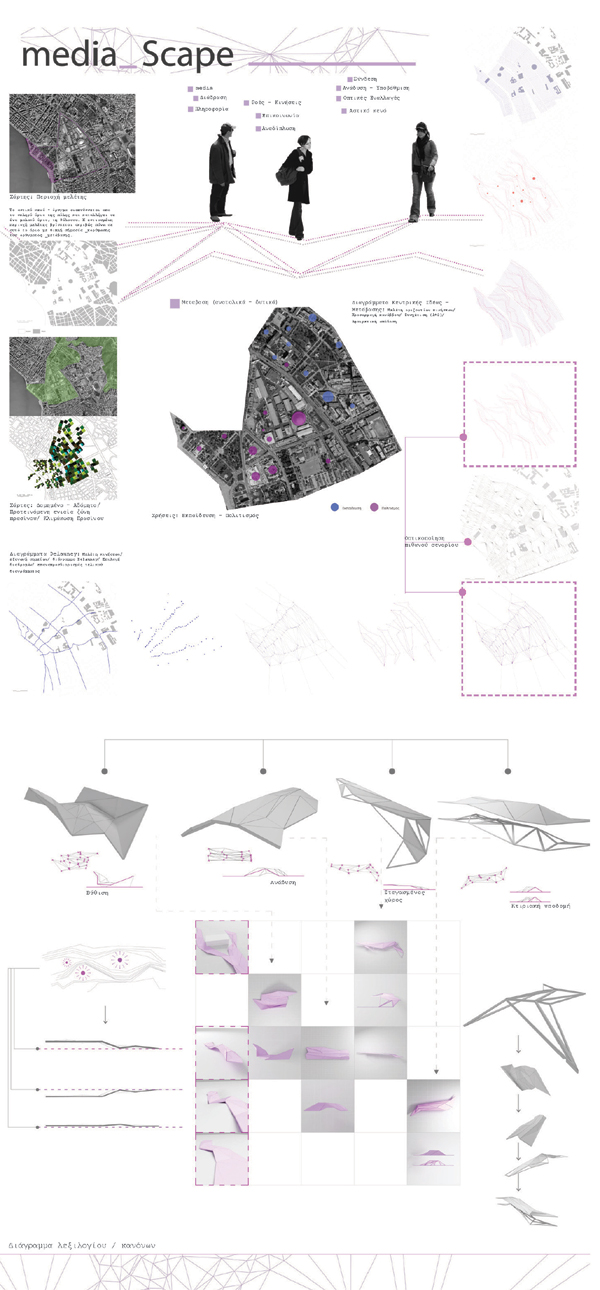
The specific study area is located at the edge of the wider urban area. The whole purpose of the study is the redesign of the waterfront area as a media_scape, a contemporary urban park with multimedia extensions. The final proposal incorporates all previous stages of the theoretical and diagrammatical approach. A complex system of movements creates the base of the whole redesign of the waterfront area. This net bends in all directions in order to create open or covered spaces , public or more private ones. The continuous variations of the ground topography is the key concept of the design process along the design of many spatial interventions that create a sophisticated environment, a place where one has the opportunity to experience the physical element through interactive and multimedia installations.
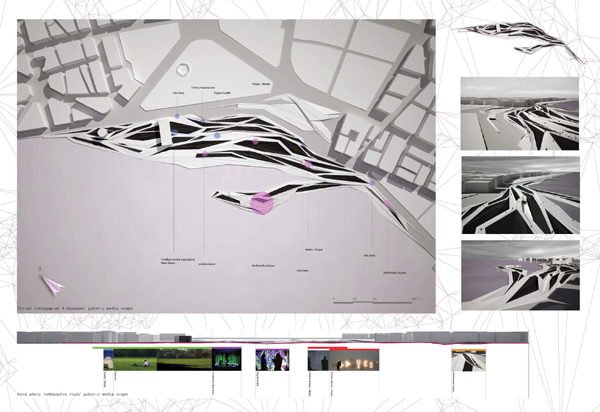
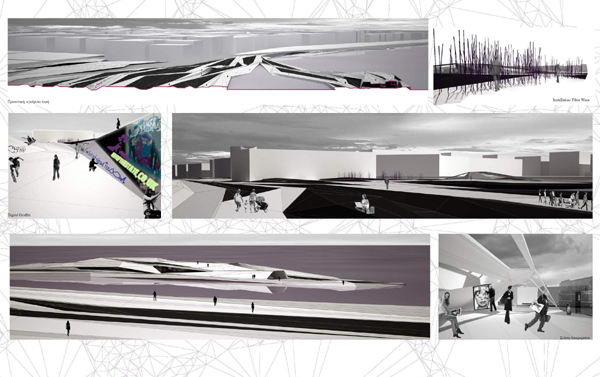
Many installations are placed scattered in order to create different "experience zones" that will attract more people to interact with the actual "place" revitalizing the landscape. A certain number of different interactive multimedia applications were examined at a certain point of the study process, in order to get more clues about the way they work and interact with the human element. This search leads to the categorization of certain installations according to the percentage of the participation of human sensations and the cultivation of certain skills during the interaction process. This study gave the necessary facts that contributed to the structural design of three pavilions where all kinds of installation can be placed. Consequently we divided these pieces into "person-media" and "media-people". The first category refers to the installations that propels social activity giving emphasis on the human parameter the second category inverses this relation, according to which the installation is more valuable to the human interaction.
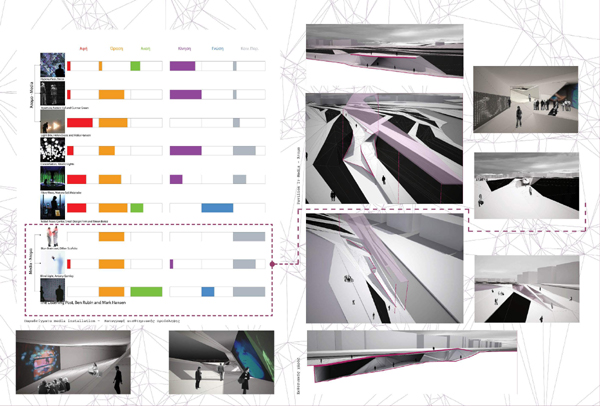
The internal structure of each pavilion is completely incorporated to the general landscape plan and consists of folded, tessellated surfaces. The actual interior space is the result of a complex folding that creates private or public exhibition spaces. In addition huge digital screens are placed on available surfaces in order to host multiple multimedia projections_ installations.
The final proposal culminates with the creation of a wharf, which is designed in respect with the whole urban configuration, and a multimedia library building. The building itself accepts and develops flows and its linear character helps it to function as a place of transition.
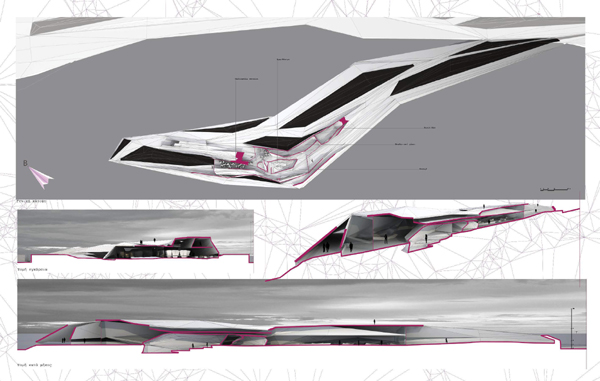
The Design of the interior organization of the library is based on its digital archive and on the way users can interact with each other. The pier itself and the building of the multimedia library, elevates the whole logic of this intervention and at the same time defines a landmark area.
